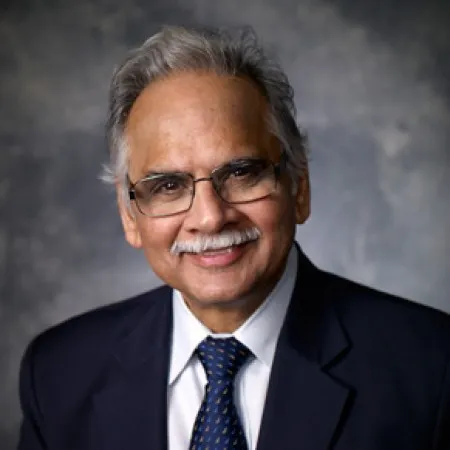
--Prof. M. Vidyasagar, FRS--
COVID-19 pandemic is testing times for entire humanity and hopes are on science to provide predictions and solutions to wade through and curb this pandemic. Scientists across the world have joined forces and are trying to answer a variety of questions regarding the COVID-19 infection such as how does the infection spread?, how does the virus infect human cells? How can we stop the infection spread? How effective are vaccines against COVID-19? and many more. One of the most important questions has been predicting the periods when the infection cases will surge in the country and what are factors that will drive this rise and ebb of the infection curve? The answer to this question can help authorities to take adequate steps to prepare.
To get more clarity on how these infections spread predictions are made, a talk entitled “SUTRA for modelling COVID-19 in India and elsewhere” was organised on the 8th of September, 2021. Prof. M. Vidyasagar, FRS, who is a SERB National Chair and Distinguished Professor at IIT Hyderabad and also one of the developers of the SUTRA model, gave this talk discussing the journey towards developing the SUTRA model. Dr. Manindra Agrawal from IIT Kanpur and Lt. Gen. Madhuri Kanitkar, Deputy Chief (IDS) were the other two scientists who were involved with Prof. Vidyasagar in developing this model.
The speaker commenced his talk by illustrating the infection curve of the Spanish Flu which hit the world during the first world war and stayed from 1917 to 1919. He pointed out the three peaks of the infection curve highlighting that the second peak was the highest among the three. He then moved on to discuss SIR (Susceptible, Infected and Removed)- one of the early models of disease spread which was given in the year 1927. The model divided the population into susceptible, infected and removed (recovered or dead) populations and was based on the assumptions that the rate of spread is proportional to the number of contacts between susceptible & infected groups and people who recover are not liable for reinfection.
Prof. Vidyasagar pointed out that while SIR model was found good enough for the disease where infection with the disease once confers a lifetime immunity against it. However, for the diseases where reinfection was possible, another model named SIRS was given where the recovered people was again added to the susceptible bucket as they had chances of infection again. These models have three additional parameters- beta, gamma and R0. Beta is the contact rate between susceptible and infected, gamma is the recovery rate and R0 refers to the average number of persons that an infected person can infect before recovering. He explained that as per these models if R0 is less than 1 then the pandemic does not take off but if R0 is more than 1 then infection increases and reaches a peak before waning.
Prof. Vidyasagar then explained the concept of herd immunity ratio in this context and said that if 75% of the population have contracted the disease than the pandemic start waning. He then moved on to explain the unique features of the COVID-19 pandemic and said that as there are many asymptomatic cases of COVID-19 infection therefore it is difficult to estimate the fraction of the infected population in this case. Discussing about SAIR model which was given in 2013, he said that although this model did account for asymptomatic cases, it could not be used as it was difficult to calibrate. Hence, the research team of Prof. Vidyasagar came up with a new version of this SAIR model- SAIR-II which was easy to calibrate and could be used for predicting COVID-19 infection peaks. Using the SAIR-II model, the team was able to quantify the impact of the first lockdown in March 2020 and predicted that if lockdown would have not been imposed then India would have hit close to 50 lakh active cases by the end of May 2020. The model was also able to predict the time and duration of the first peak.
SAIR-II model, however, had two issues. The model did not cater for asymptomatic patients crossing over into the symptomatic category and the model could only be calibrated at the beginning of the pandemic and could not be recalibrated as time goes on. These issues became the motivation for developing the SUTRA model.
SUTRA (Susceptible, Undetected, Tested (positive), and Removed Approach) model is based on assumption that infected people who have isolated do not spread the disease. Also, some asymptomatic cases can be detected through contact tracing followed by testing. Therefore, the model divides infected into two categories- undetected and tested (positive). The model also takes into account the percentage of vaccinated population, waning immunity, the emergence of new variants, lockdown, disregard or adherence to COVID-19 protocols by the population while predicting the infection rates.
The speaker also told that the SUTRA model has predicted COVID-19 peaks of various countries such as the UK, US, Italy, Japan etc. Also, it was able to predict multiple COVID-19 peaks in the US and UK successfully. Giving a glimpse of the future as indicated by the model, Prof. Vidyasagar told that the third wave may come between October and November but the infection rates will be less than the first two waves with cases up to 1.5-1.7 lakh per day in the most pessimistic scenario such as the emergence of a new variant with high transmission. He also discussed the Maharashtra and Kerala case rate.
Given the topic was of immediate interest, a lot of questions were asked by the audience which sparked a great conversation among the meeting members.
The video is available on our YouTube channel: Link.